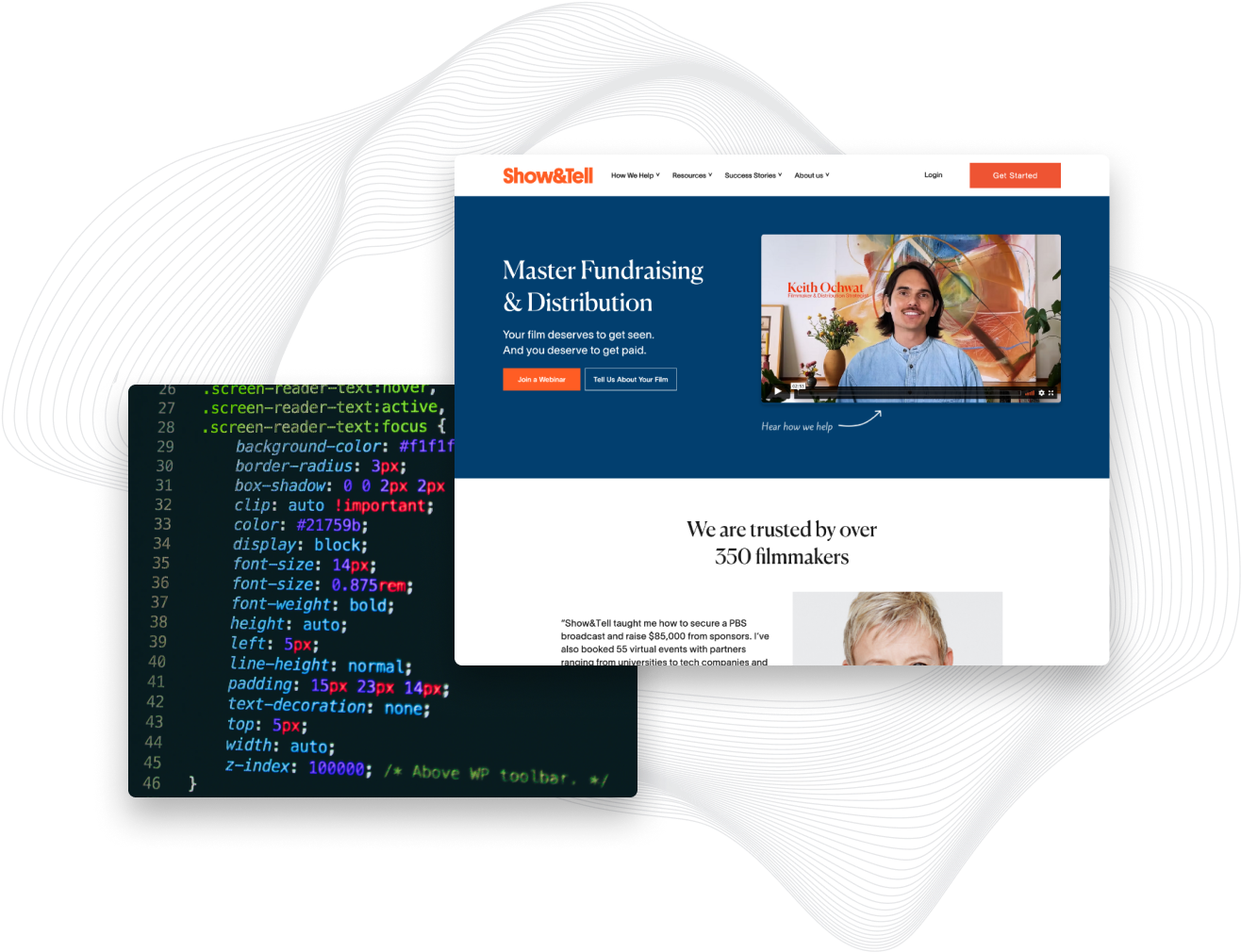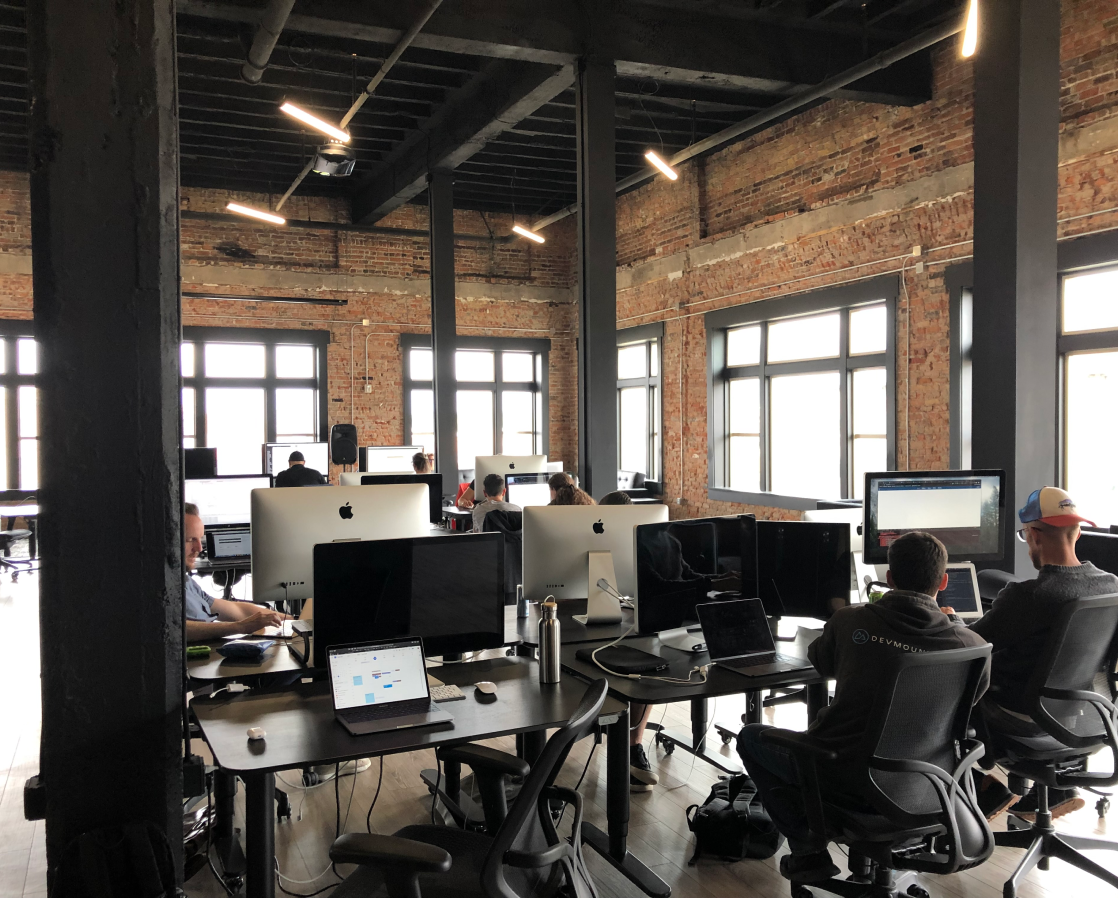
Are you worried about pouring significant resources into a massive tech project without knowing whether it will succeed?Wish you could minimize the risk of validating your idea with a proof of concept before committing to a full-scale build?
Have you faced setbacks from poorly written code, making it harder for others to step in and continue the work? Are you frustrated with user interfaces that fail to engage and delight your customers, despite significant investment?
Are your internal development projects dragging on because your team is stretched too thin? Is your main team bogged down with side projects, preventing you from moving forward as quickly as you'd like?
If any of these sound familiar, we can help.

— Sheree N., We Believe Foundation
This often means that these three results occur:
It’s a story we’ve seen many times. A traditional (non-tech) company hires a developer from within their network: Due to the developer’s limited experience, the project is built off their skill level rather than according to project requirements.
Everything seems fine at first, but eventually, the only parts of the product that perform well are the ones aligned with that particular developer’s experience. Aside from an underwhelming product, these teams also experience missed deadlines and bloated budgets.
But it doesn’t have to be that way.
By taking a requirements-first approach, seasoned developers mitigate risk as they begin with the end product in mind.
No one-size fits all solution exists for building quality products, so it’s important that you identify the risks associated with what’s being built. If you approach those largest risks up front, rather than saving the difficult parts for later, you can validate the product as you go. Otherwise, you run the risk of scrapping work that doesn’t meet requirements, or even completely reconsidering the product.
For example, if the product utilizes newer technologies like AI, you may want to start with a simple prototype to ensure fundamental functionalities meet product requirements before expanding on it.
If the product utilizes more established technologies, you could approach from more of a pre-sell position to help validate market fit.
So what can you do today?
Understanding the largest potential barriers to your final product allows you to plan for them up front.
Ultimately, the benefit of this approach is that it helps ensure a more predictable journey while building your product and gives you more confidence that it will work as desired, be completed on time, and fall within budget.
While this might seem like the logical first step to build out your product, it often has unintended consequences, such as higher costs and inconsistent functionality. These costs can quickly skyrocket if a more skilled developer is required to improve the original code.
Start with a robust diagnosis of exactly what you need, and start building the most challenging components. Once you do that, you can safely find a solution that is both comprehensive and flexible enough to meet those requirements.
le providing walkthroughs and training to your team or even other development teams, and we are always available if a question pops up down the line.
They hire developers with siloed expertise, who, end up building products based on their own limited experience rather than project requirements.
They don’t understand the full scope of what creating the product will take and cost, nor do they know how to properly vet developers and teams. This lack of clarity can lead to underestimating critical aspects, resulting in overspending, inefficiencies, and even potentially product failure.
They don’t really know if it’s worth committing to invest in substantial resources. Without identifying high-risk areas, they risk developing features that won’t resonate with users, which wastes time and money. It’s best to start simple and build upon what works, rather than go all in and hope it pays off.
You don’t have to worry about how to make your idea a functional product; we will do that part for you. At the end of the day, groundbreaking ideas and market fit mean nothing if the product doesn’t exist.
We’ve built and launched hundreds of websites and apps across many industries, which means when you start working with us, you immediately add a deep well of experience to your team that you didn’t have access to yesterday. We’ve already made and learned from many of the mistakes we can help you avoid, and we’re eager to do everything we can to help you along the way.
New development teams require fine-tuning as they figure out workflows, quality standards, and even interpersonal team dynamics. All of these factors affect total spend. Our developers are already prepared to hit the ground running.
Managing a team is much more than timelines and training; hiring out your development work team means you don’t have to worry about HR, paperwork, managing schedules, or — perhaps most importantly — whether you can afford full-time employees long-term. Unfortunately, many developers have come to expect churn and burn in their careers due to poor forecasting or other issues.
When you hire HQ, you don’t have to worry about any of these details.
Here's how it works:
We specialize in translating broad ideas into specific project requirements: Throw your ideas over the fence, and we’ll take it from there to turn it into a viable product.
We begin by defining project requirements and how we’d accomplish those so everyone involved is agreed on how the end product will function.While we rely on you to be the expert in your market, we’ll also do user research and make recommendations based on our understanding of our experience and your end goals.
To avoid money pit projects, we’ll validate the most difficult functionalities first. As we build, we will test to make sure the project is meeting requirements.
After everything is built, we will do Quality Assurance testing before sending to you for final review and feedback. Together, we’ll iterate as needed, and nothing is launched until you give the green light.
We will not build or launch anything without your approval — at the end of the day, you are the product owner and our goal is to help you succeed.
We’ll continue to test after the product is live, and will recommend improvement updates as we see opportunities to improve the user experience. If you have further improvements you’d like to make, we will scope those out for you so you can make informed decisions based on budgets, the user experience, and possible impacts on the future of your product.
We love maintaining the products we build. Not only is the code familiar to us, but we admittedly have some emotional attachment. We’re happy to help maintain your products as long as you like — we have some products we’ve been taking care of for over a decade.
Some of these projects have continual updates and improvements that come in from the product owners, and some projects may only need an adjustment here and there a couple times each year. We pride ourselves on our flexibility as we prioritize what will best for the teams we serve.
We understand that good communication is the single greatest factor regarding project success and customer satisfaction. We’ll meet at a cadence that fits your needs, but waste your time with meetings for the sake of meeting. We’ll also send frequent and regular updates regarding project and budget status.
We understand things change and products evolve — we intentionally set up our workflow in a way that allows you to make changes where appropriate instead of being tied to ideas that no longer fit.
This is your project, so all related assets are yours — there’s no chance of us holding anything hostage, because we’ll set it up under your accounts. If you want to take anything over, you don’t need our permission, because it isn’t ours to control.
HQ has dedicated team members who try to break what we build so we can find and address vulnerabilities and bugs. We also include your team in the testing process to get a fresh perspective, and nothing will be launched without your approval.


















Most non-tech companies struggle when trying to develop software solutions.
The reason is because of a lack of in-house software development experience and skills.
When this happens, they often waste time and money on underperforming software projects.
Until all of a sudden, they lose their competitive edge, stunting overall business growth.
What HQ does is specialize in helping these non-tech companies develop thoughtfully executed products that fulfill client goals.
We created The Innovative Enterprise Transformation Program because it’s the single most effective way to design and build the products these companies have imagined.
And the benefit of developing your product the right way is that you build in an efficient, risk-reducing way.
All of which allows you to build a software product that furthers your goals and drives results for your company.

— Susie B., Founder at HeyGrillHey
While project costs vary like the cost of cars do, projects like the ones discussed here are frequently ≈ $50k.
Keeping in mind it’s impossible to estimate without understanding your needs, we’re always happy to meet and give you a high-level estimate to help you determine next steps as you plan a project.
Much like cost, this will depend on the extent of the project, but a safe starting point is to think of your time investment as at least a part-time job as we work together.
It’s not that you’ll need to hold our hands — we’ll take care of the nitty gritty work and team management to meet timelines, etc. — it’s more that we believe so strongly in good communication that we want to keep you involved along the way.
A good baseline to plan on is a 12-week sprint, though this varies like everything else.
Absolutely! While the details on this page are aimed at those companies without a tech team of their own, we love working with other teams who have capable developers! We regularly help on projects where we play the role of supplemental development resources, whether it’s to make up for workforce numbers or technical abilities.
If your project requires design or development, we want to hear about it and help where we can. If we’re not a good fit for your needs, we’ll tell you; we’re always happy to make recommendations and introductions. At HQ, our approach is always to focus on what’s best for you.